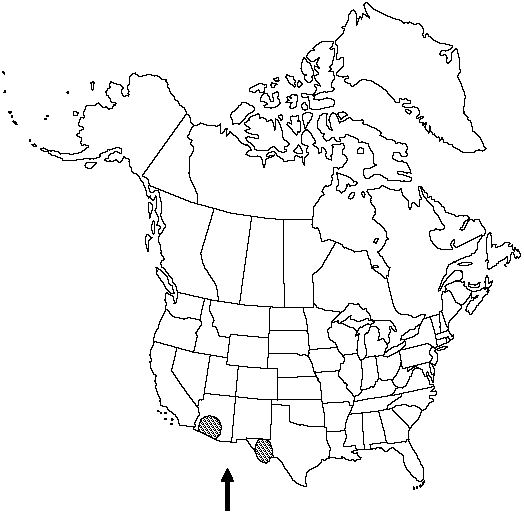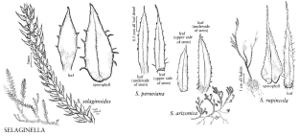FNA>Volume Importer |
FNA>Volume Importer |
| Line 17: |
Line 17: |
| | }}<!-- | | }}<!-- |
| | | | |
| − | --><span class="statement" id="st-d0_s0" data-properties="mat architecture or fragility"><b>Plants </b>on rock or terrestrial, forming rather loose mats.</span> <span class="statement" id="st-d0_s1" data-properties="upperside growth form or orientation;upperside shape;underside growth form or orientation;underside shape;branch development;tip orientation;condition condition or texture"><b>Stems </b>not readily fragmenting, prostrate, upperside and underside structurally different, irregularly forked, branches determinate, tips upturned in extremely dry conditions.</span> <span class="statement" id="st-d0_s2" data-properties="rhizophore diameter"><b>Rhizophores </b>borne on upperside of stem throughout, 0.25–0.3 mm diam.</span> <span class="statement" id="st-d0_s3" data-properties="leaf growth form;leaf orientation;leaf orientation;leaf orientation;leaf coloration;rank count"><b>Leaves </b>conspicuously dimorphic, in 8 ranks, tightly appressed to ascending, green;</span> <span class="statement" id="st-d0_s4" data-properties="abaxial ridge count">abaxial ridges present;</span> <span class="statement" id="st-d0_s5" data-properties="apex coloration;apex coloration;apex coloration;bristle shape;bristle some measurement;bristle shape">apex with transparent to opaque, flattened bristle 0.1–0.3 mm, sometimes becoming acute (by breaking off of bristle).</span> <span class="statement" id="st-d0_s6" data-properties="underside leaf shape;underside leaf length;underside leaf width"><b>Underside </b>leaves lanceolate, 2–2.5 X 0.5–0.6 mm;</span> <span class="statement" id="st-d0_s7" data-properties="base shape;base pubescence">base decurrent, glabrous;</span> <span class="statement" id="st-d0_s8" data-properties="margin architecture or pubescence or shape;cilium coloration;cilium coloration;cilium coloration;cilium orientation;cilium orientation;cilium some measurement">margins ciliate, cilia transparent to opaque, spreading or ascending, 0.06–0.13 mm.</span> <span class="statement" id="st-d0_s9" data-properties="upperside leaf shape;upperside leaf shape;upperside leaf shape;upperside leaf length;upperside leaf width"><b>Upperside </b>leaves linear-lanceolate to slightly falcate (on marginal ranks), 1.9–2.25 X 0.4–0.55 mm;</span> <span class="statement" id="st-d0_s10" data-properties="base fusion;base pubescence;base pubescence">base abruptly adnate, pubescent or glabrous;</span> <span class="statement" id="st-d0_s11" data-properties="margin architecture or pubescence or shape;cilium coloration;cilium coloration;cilium coloration;cilium orientation;cilium some measurement">margins ciliate, cilia transparent to opaque, spreading, 0.06–0.15 mm.</span> <span class="statement" id="st-d0_s12" data-properties="strobilus architecture or arrangement or growth form;strobilus some measurement"><b>Strobili </b>solitary, 5–10 mm;</span> <span class="statement" id="st-d0_s13" data-properties="sporophyll shape;abaxial ridge prominence;base pubescence;margin shape;margin shape;margin shape;apex shape">sporophylls ovate-deltate, abaxial ridges not prominent, base glabrous, margins short-ciliate to denticulate, apex acute.</span><!-- | + | --><span class="statement" id="st-undefined" data-properties=""><b>Plants </b>on rock or terrestrial, forming rather loose mats. <b>Stems</b> not readily fragmenting, prostrate, upperside and underside structurally different, irregularly forked, branches determinate, tips upturned in extremely dry conditions. <b>Rhizophores</b> borne on upperside of stem throughout, 0.25–0.3 mm diam. <b>Leaves</b> conspicuously dimorphic, in 8 ranks, tightly appressed to ascending, green; abaxial ridges present; apex with transparent to opaque, flattened bristle 0.1–0.3 mm, sometimes becoming acute (by breaking off of bristle). <b>Underside</b> leaves lanceolate, 2–2.5 × 0.5–0.6 mm; base decurrent, glabrous; margins ciliate, cilia transparent to opaque, spreading or ascending, 0.06–0.13 mm. <b>Upperside</b> leaves linear-lanceolate to slightly falcate (on marginal ranks), 1.9–2.25 × 0.4–0.55 mm; base abruptly adnate, pubescent or glabrous; margins ciliate, cilia transparent to opaque, spreading, 0.06–0.15 mm. <b>Strobili</b> solitary, 5–10 mm; sporophylls ovate-deltate, abaxial ridges not prominent, base glabrous, margins short-ciliate to denticulate, apex acute.</span><!-- |
| | | | |
| | -->{{Treatment/Body | | -->{{Treatment/Body |
| Line 46: |
Line 46: |
| | |publication year=1920 | | |publication year=1920 |
| | |special status= | | |special status= |
| − | |source xml=https://jpend@bitbucket.org/aafc-mbb/fna-fine-grained-xml.git/src/287ef3db526bd807d435a3c7423ef2df1e951227/V2/V2_485.xml | + | |source xml=https://jpend@bitbucket.org/aafc-mbb/fna-data-curation.git/src/9216fc802291cd3df363fd52122300479582ede7/coarse_grained_fna_xml/V2/V2_485.xml |
| | |genus=Selaginella | | |genus=Selaginella |
| | |subgenus=Selaginella subg. Tetragonostachys | | |subgenus=Selaginella subg. Tetragonostachys |
| | |species=Selaginella arizonica | | |species=Selaginella arizonica |
| − | |abaxial ridge count=present
| |
| − | |abaxial ridge prominence=not prominent
| |
| − | |apex coloration=transparent;opaque
| |
| − | |apex shape=acute
| |
| − | |base fusion=adnate
| |
| − | |base pubescence=glabrous;glabrous;pubescent;glabrous
| |
| − | |base shape=decurrent
| |
| − | |branch development=determinate
| |
| − | |bristle shape=acute;flattened
| |
| − | |bristle some measurement=0.1mm;0.3mm
| |
| − | |cilium coloration=transparent;opaque
| |
| − | |cilium orientation=spreading;ascending;spreading
| |
| − | |cilium some measurement=0.06mm;0.15mm
| |
| − | |condition condition or texture=dry
| |
| − | |leaf coloration=green
| |
| − | |leaf growth form=dimorphic
| |
| − | |leaf orientation=tightly appressed;ascending
| |
| − | |margin architecture or pubescence or shape=ciliate;ciliate
| |
| − | |margin shape=short-ciliate;denticulate
| |
| − | |mat architecture or fragility=loose
| |
| − | |rank count=8
| |
| − | |rhizophore diameter=0.25mm;0.3mm
| |
| − | |sporophyll shape=ovate-deltate
| |
| − | |strobilus architecture or arrangement or growth form=solitary
| |
| − | |strobilus some measurement=5mm;10mm
| |
| − | |tip orientation=upturned
| |
| − | |underside growth form or orientation=prostrate
| |
| − | |underside leaf length=2mm;2.5mm
| |
| − | |underside leaf shape=lanceolate
| |
| − | |underside leaf width=0.5mm;0.6mm
| |
| − | |underside shape=forked
| |
| − | |upperside growth form or orientation=prostrate
| |
| − | |upperside leaf length=1.9mm;2.25mm
| |
| − | |upperside leaf shape=linear-lanceolate;slightly falcate
| |
| − | |upperside leaf width=0.4mm;0.55mm
| |
| − | |upperside shape=forked
| |
| | }}<!-- | | }}<!-- |
| | | | |
| | -->[[Category:Treatment]][[Category:Selaginella subg. Tetragonostachys]] | | -->[[Category:Treatment]][[Category:Selaginella subg. Tetragonostachys]] |
Plants on rock or terrestrial, forming rather loose mats. Stems not readily fragmenting, prostrate, upperside and underside structurally different, irregularly forked, branches determinate, tips upturned in extremely dry conditions. Rhizophores borne on upperside of stem throughout, 0.25–0.3 mm diam. Leaves conspicuously dimorphic, in 8 ranks, tightly appressed to ascending, green; abaxial ridges present; apex with transparent to opaque, flattened bristle 0.1–0.3 mm, sometimes becoming acute (by breaking off of bristle). Underside leaves lanceolate, 2–2.5 × 0.5–0.6 mm; base decurrent, glabrous; margins ciliate, cilia transparent to opaque, spreading or ascending, 0.06–0.13 mm. Upperside leaves linear-lanceolate to slightly falcate (on marginal ranks), 1.9–2.25 × 0.4–0.55 mm; base abruptly adnate, pubescent or glabrous; margins ciliate, cilia transparent to opaque, spreading, 0.06–0.15 mm. Strobili solitary, 5–10 mm; sporophylls ovate-deltate, abaxial ridges not prominent, base glabrous, margins short-ciliate to denticulate, apex acute.
Habitat: In rock crevices or on gravel, on sandstone, igneous, or rarely limestone substrates
Elevation: 600–2000 m
Distribution
Ariz., Tex., Mexico in Baja California, Sonora.
Discussion
Selaginella arizonica can be further distinguished from the similar S. peruviana by its broad, thin underside leaves. In S. peruviana the underside leaves are narrow and fleshy.
Selected References
None.

